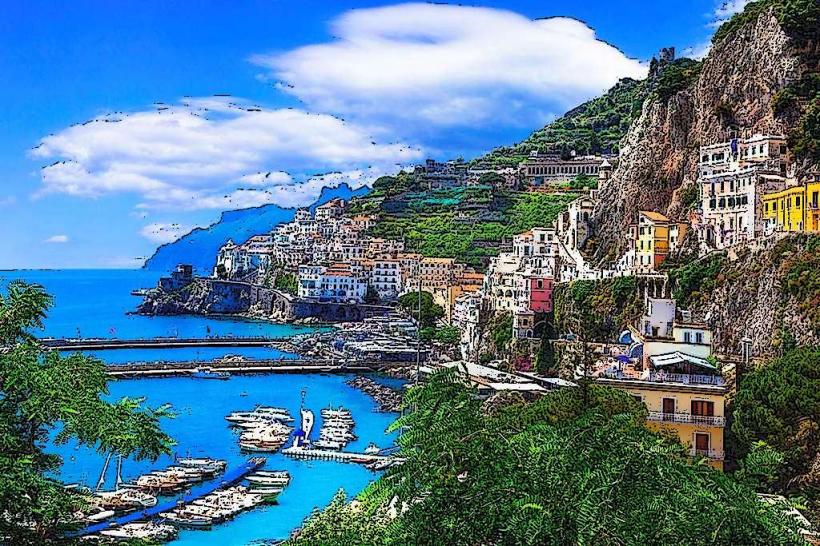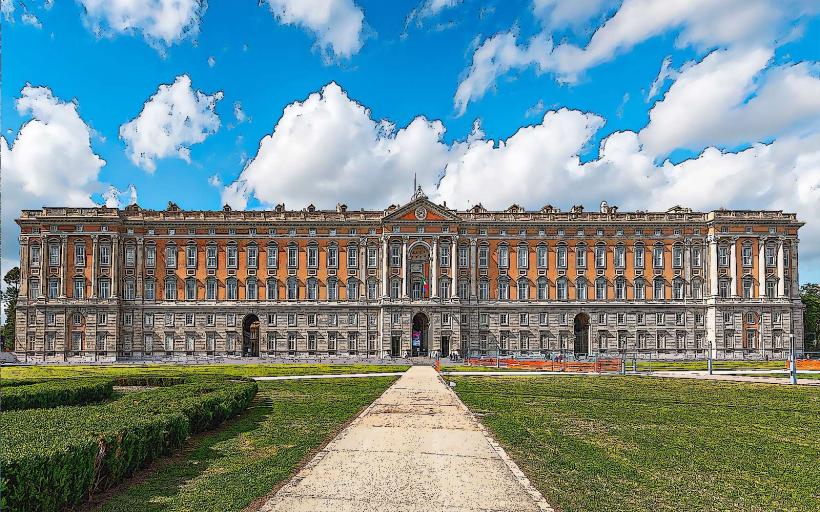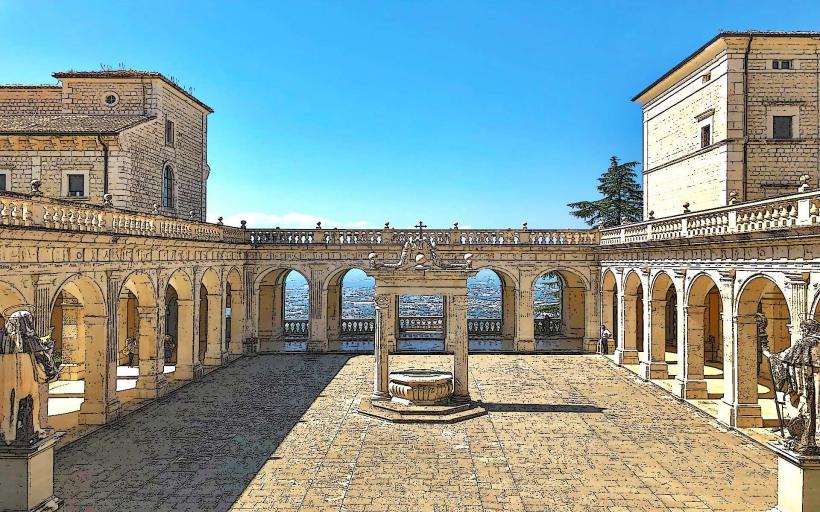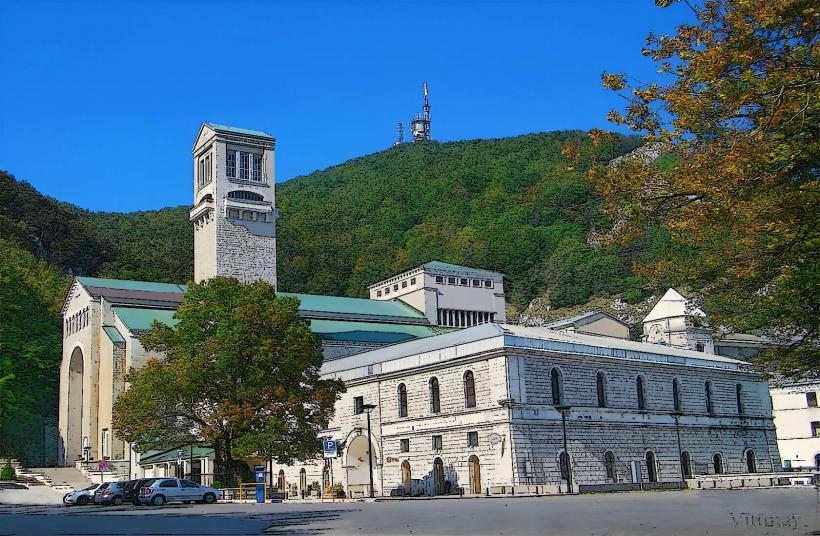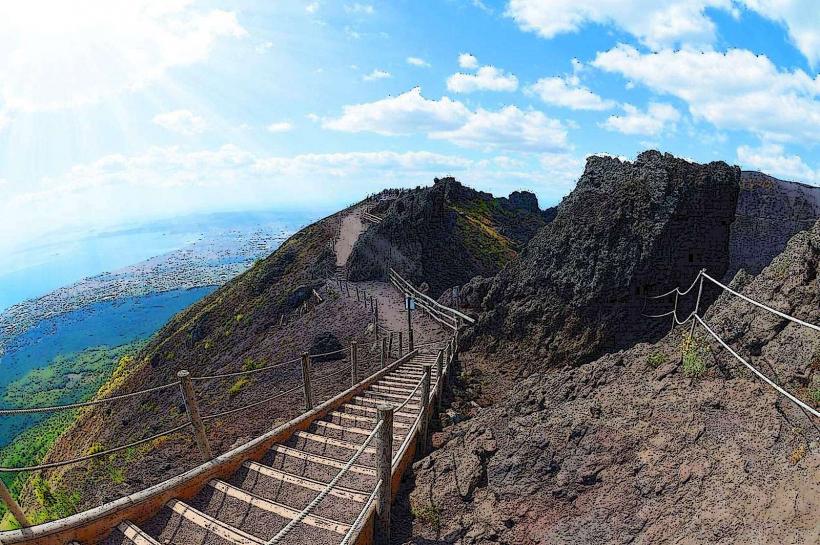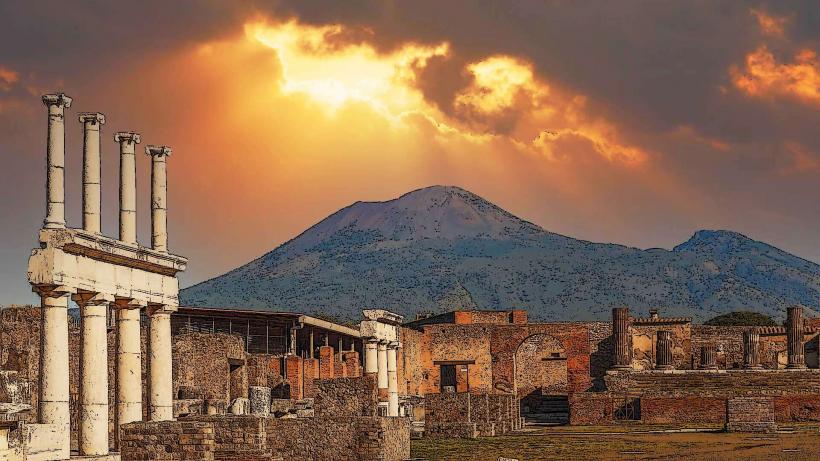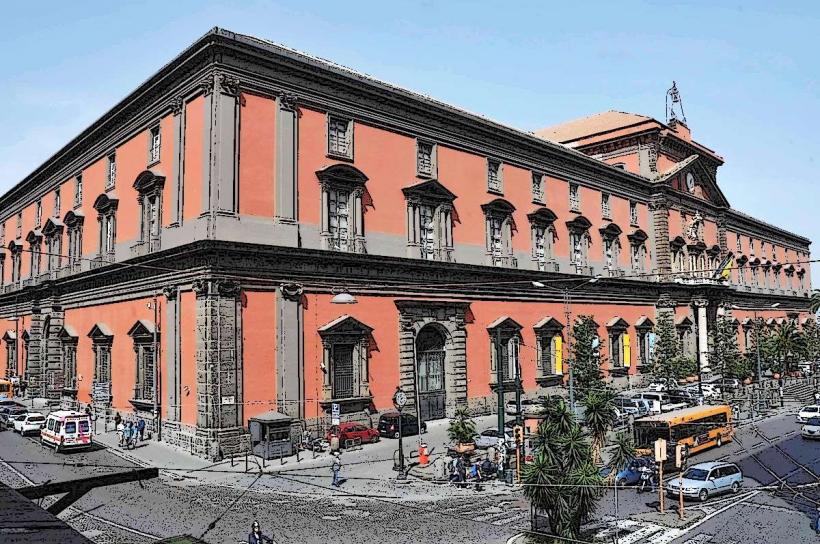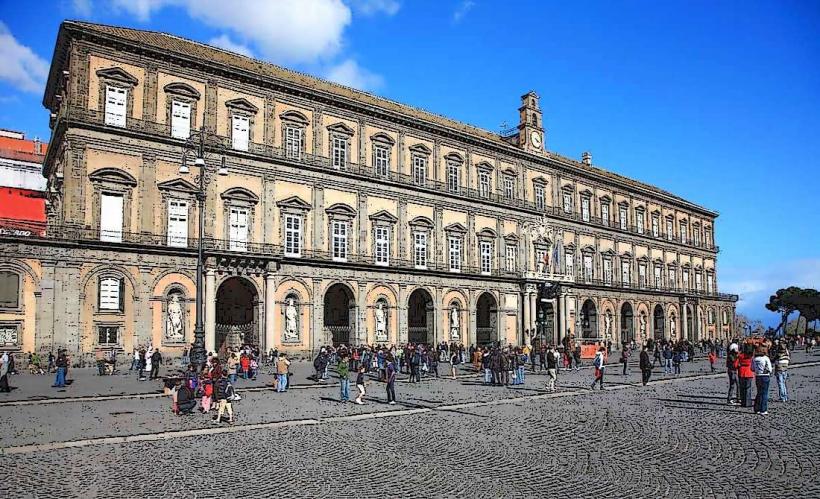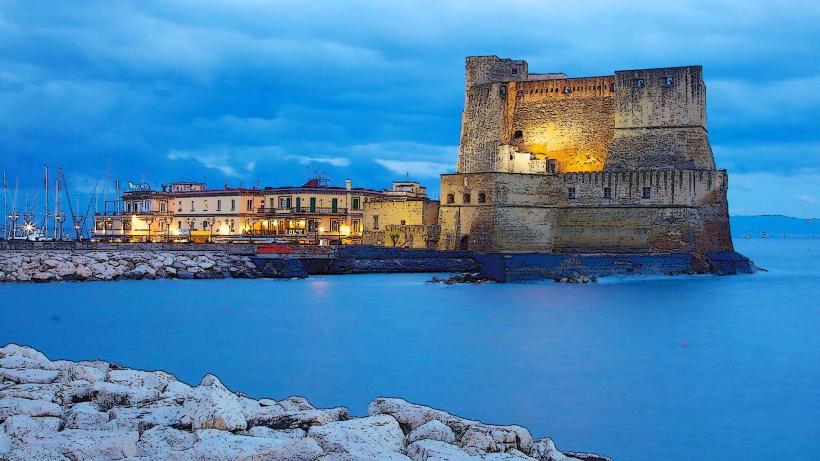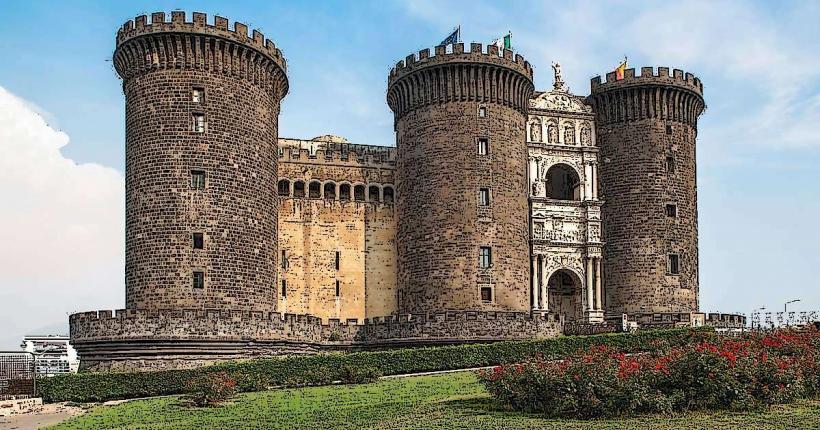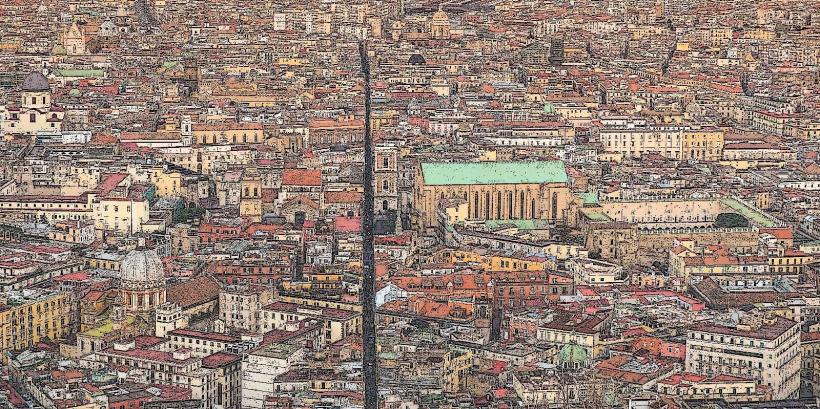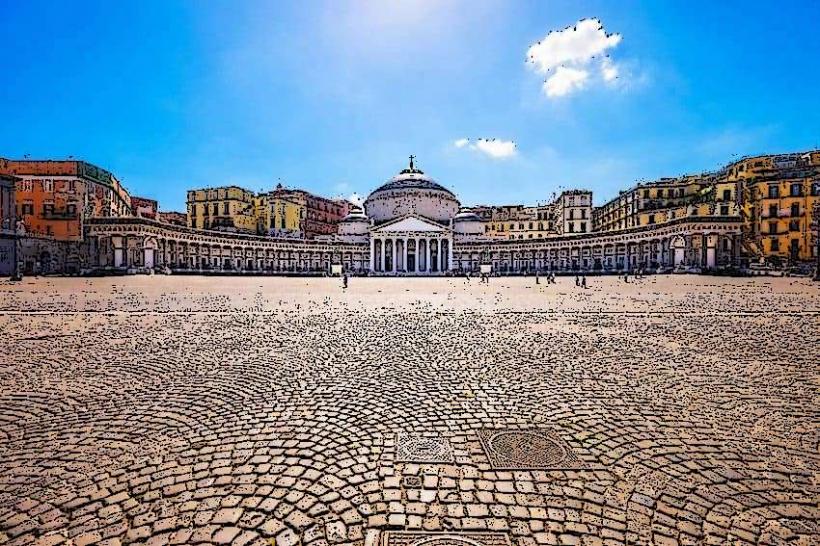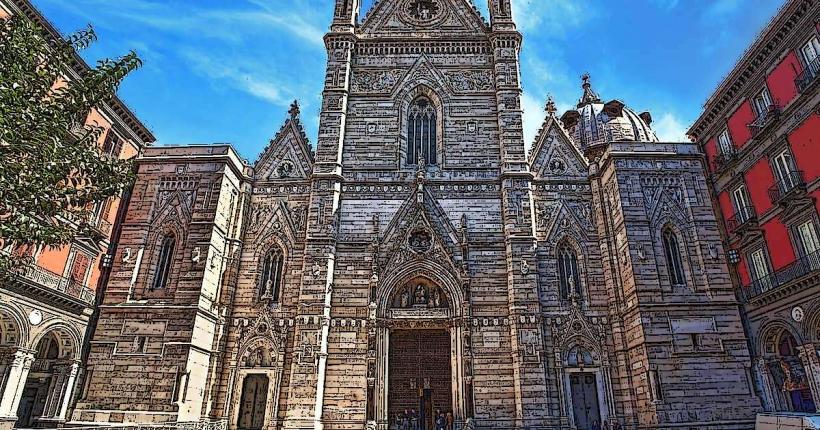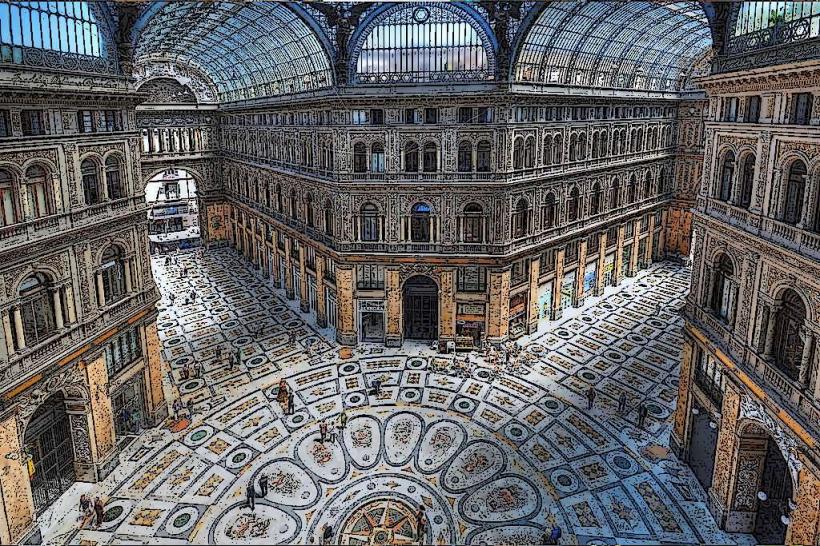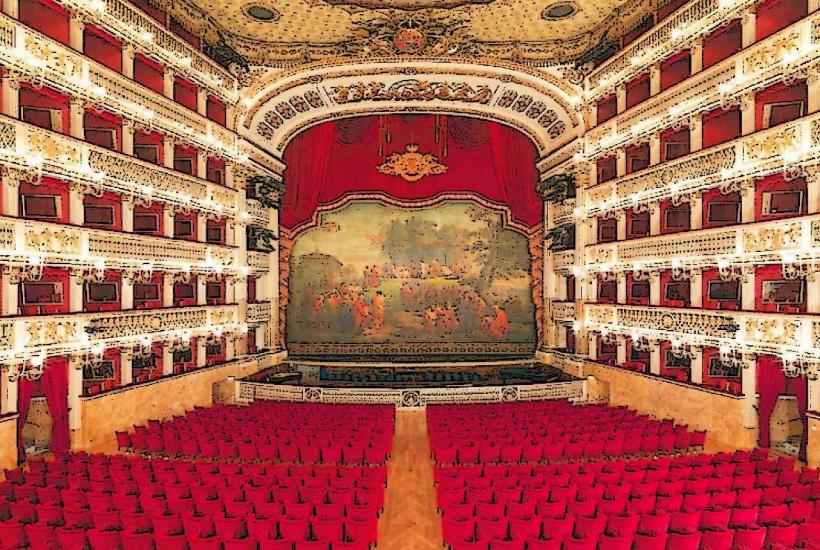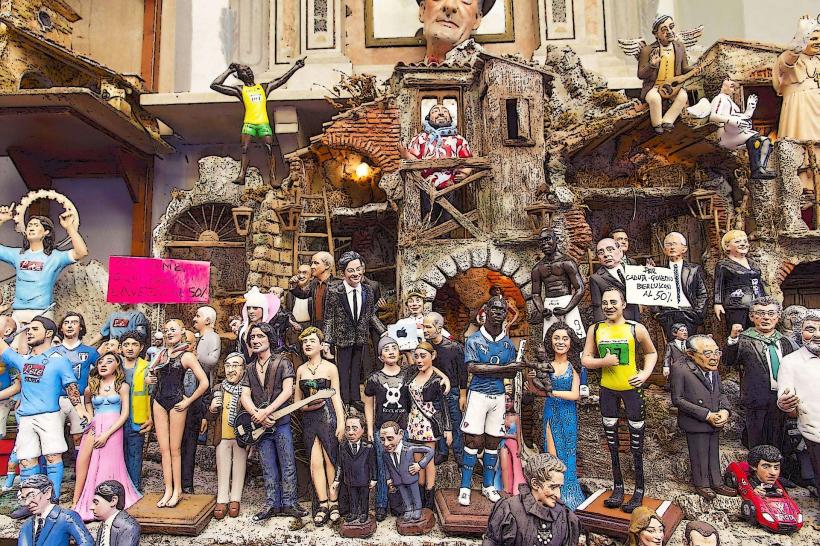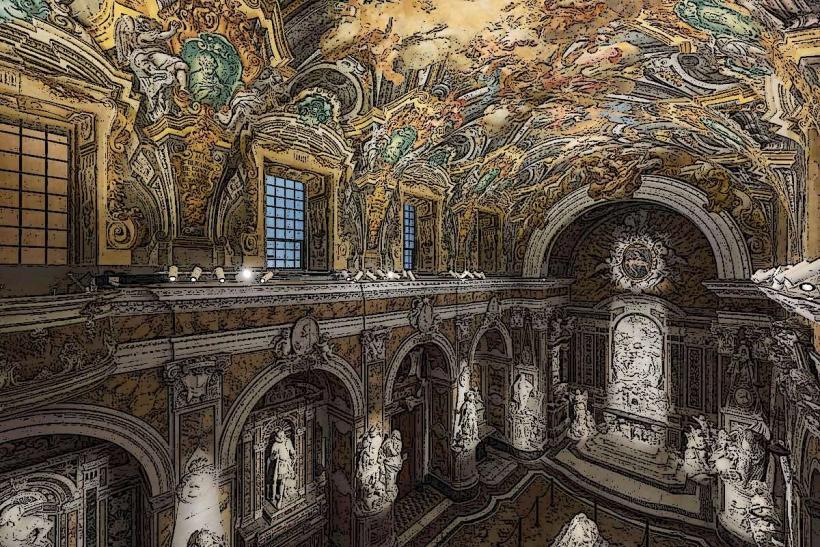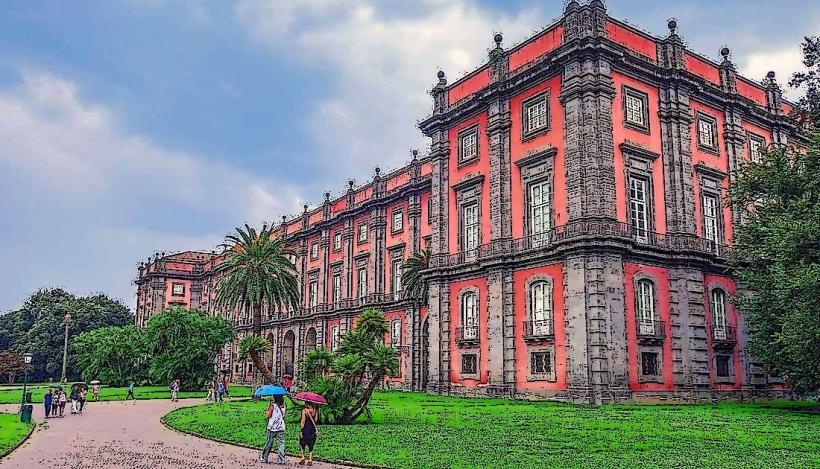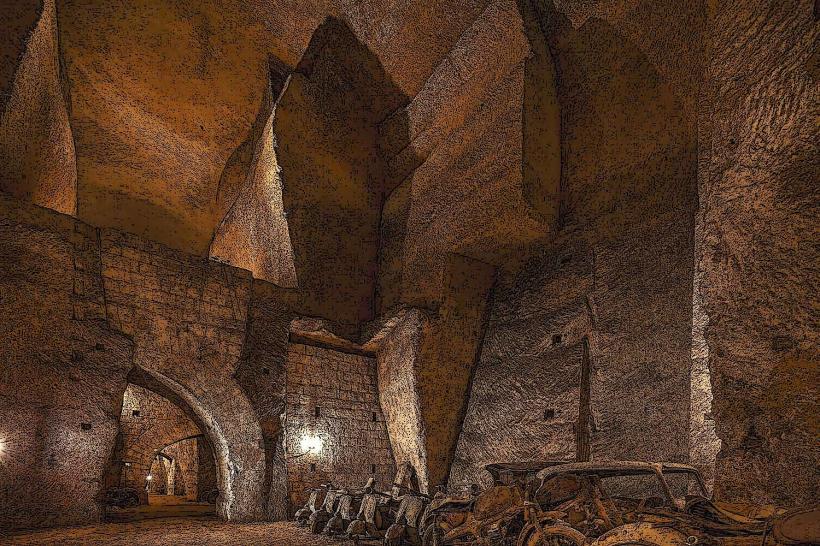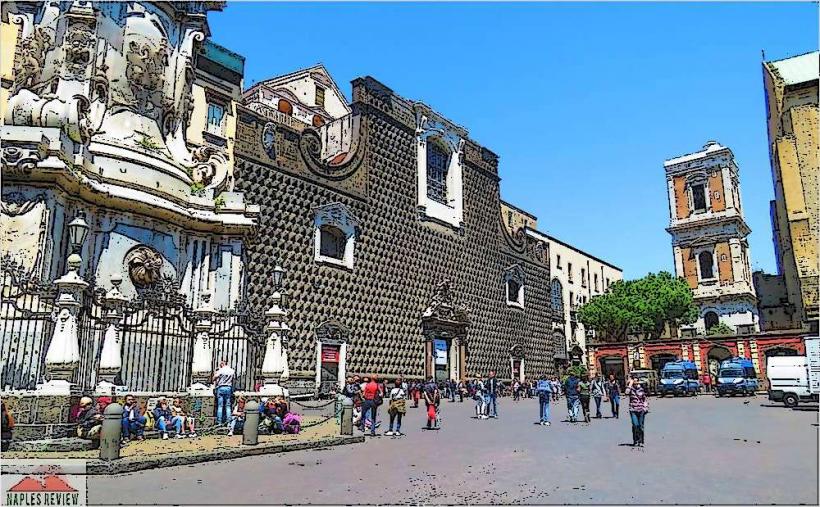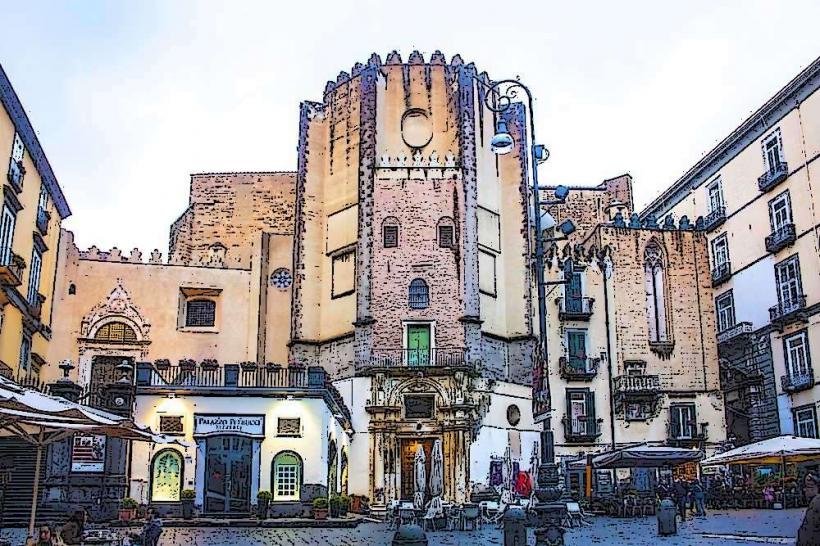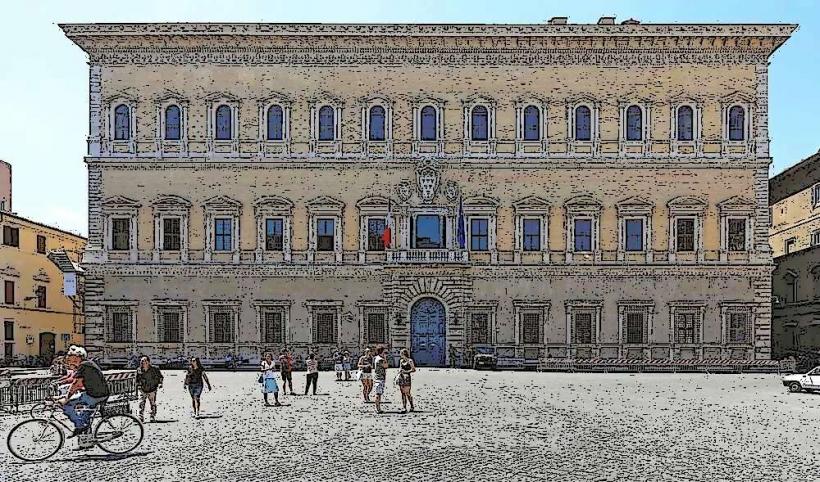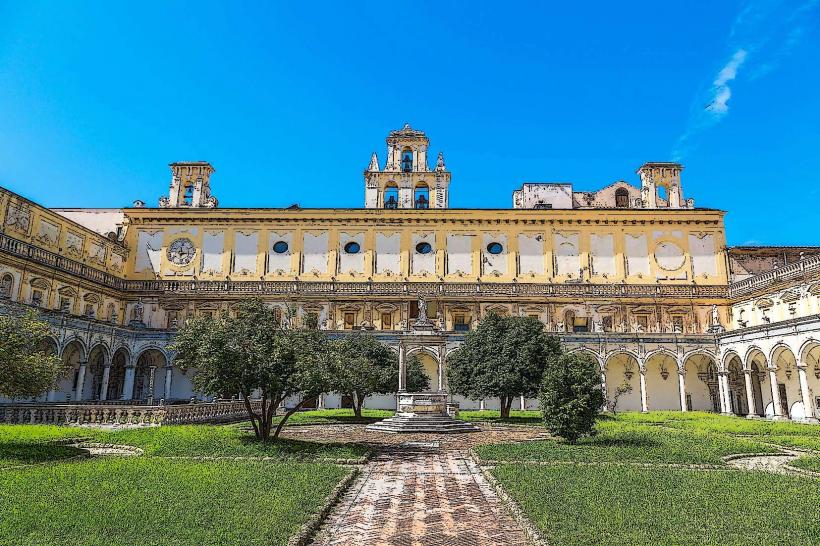Information
Landmark: HerculaneumCity: Naples
Country: Italy
Continent: Europe
Herculaneum is an ancient Roman town that, along with Pompeii, was destroyed and buried by the eruption of Mount Vesuvius in 79 AD. Located in the modern-day town of Ercolano, near Naples, Italy, Herculaneum was once a prosperous seaside resort town, favored by wealthy Romans. While Pompeii has become more famous, Herculaneum is equally significant for its preservation, offering unique insights into Roman life.
1. History of Herculaneum
- Foundation and Growth: Herculaneum was founded by the Oscans in the 6th century BC, but it became a Roman settlement after the Samnite Wars in the 4th century BC. The town was particularly popular with Rome's elite and was home to luxurious villas, bathhouses, and public buildings.
- Destruction in 79 AD: Like Pompeii, Herculaneum was buried in volcanic ash during the catastrophic eruption of Mount Vesuvius in 79 AD. However, unlike Pompeii, Herculaneum was largely destroyed by a pyroclastic surge—a cloud of fast-moving hot gases and volcanic material—rather than the slow accumulation of ash. This meant that Herculaneum was buried deeper and preserved differently.
- Rediscovery: Herculaneum was rediscovered in 1709, though excavation didn’t begin in earnest until the late 18th century. Despite being less famous than Pompeii, Herculaneum's ruins offer some of the best-preserved Roman artifacts and buildings due to the nature of its burial.
2. Preservation of Herculaneum
- Exceptional Preservation: Due to the nature of the volcanic eruption, Herculaneum was covered by a much deeper layer of ash and pyroclastic material than Pompeii, which helped preserve organic materials like wood, food, and textiles. The intense heat also carbonized many wooden structures, leaving behind remarkable remains of buildings, furniture, and even carbonized scrolls.
- Buildings and Artifacts: Herculaneum is known for the preservation of its upper floors of buildings, which are often missing in Pompeii. This has given archaeologists a more complete picture of how multi-story homes in Roman towns were constructed. Visitors can also see mosaics, frescoes, and statues, many of which are in a remarkable state of preservation.
3. Key Features of the Herculaneum Site
- The House of the Deer: One of the best-preserved houses in Herculaneum, the House of the Deer (named after the mosaics of deer hunting on the floors) provides insight into the opulence of the town's wealthiest residents. It features elegant frescoes and mosaics.
- The House of the Stags: This villa, which was owned by a wealthy Roman, is another example of the luxurious homes found in Herculaneum. It contains beautiful frescoes and mosaics depicting mythological scenes and the natural world.
- The Villa of the Papyri: One of the most famous and remarkable discoveries at Herculaneum is the Villa of the Papyri, a large, lavish home that housed a private library of carbonized scrolls. Many of the scrolls were preserved by the eruption and have been painstakingly uncovered by archaeologists and modern scholars. They offer valuable insight into Roman intellectual and philosophical thought.
- The Bathhouses: The Thermae of Herculaneum (public baths) are well-preserved and reveal much about Roman social life. The Stabian Baths in Herculaneum, similar to those in Pompeii, were public spaces where Romans would engage in bathing, socializing, and relaxation.
- The Forum: The central meeting place of Herculaneum, much like in Pompeii, was the Forum. Though smaller and less well-preserved than Pompeii’s Forum, it gives an idea of the social and political hub of the town. It is surrounded by temples and civic buildings.
- The Streets and Shops: Herculaneum’s streets are lined with shops, and many of the buildings along them are well-preserved. One of the most intriguing finds is the Fullonica (a laundry), where visitors can see evidence of how Romans washed their clothes.
- The Ancient Boat Houses: In 1980, excavations uncovered the remains of boat houses along the ancient coastline. In these boat houses, archaeologists found wooden boats that had been destroyed by the eruption. Some of these boats were believed to be part of the fishing fleet of Herculaneum.
4. Human Remains
- Unlike Pompeii, where many victims were trapped and preserved in ash, the remains of Herculaneum’s residents are generally fewer but still highly significant. Most of the victims in Herculaneum were buried by a pyroclastic surge and died in situ. Excavations of the furnace-like deposits have revealed the remains of people who tried to flee but were caught in the hot gases of the eruption. Their remains, often charred and preserved in the volcanic material, offer a chilling reminder of the eruption's devastation.
- The most famous remains of Herculaneum are those of a group of about 300 people who were discovered near the beach, having sought refuge in a boathouse. These remains, preserved by the heat, give a dramatic account of their final moments.
5. Art and Frescoes
- Wall Paintings: Herculaneum’s wall frescoes are some of the finest examples of Roman wall painting. They feature scenes from mythology, landscapes, and everyday life. The use of perspective and vivid colors in the frescoes shows the advanced artistic techniques of the Romans. Many of these can be seen in homes like the House of the Black Room and Villa of the Papyri.
- Mosaics: The town is also famous for its mosaics, many of which are on the floors of wealthy houses. The mosaics often depict elaborate scenes of nature, animals, and mythological figures, with the House of the Faun being an especially famous example.
- Statues and Sculptures: Several statues and sculptures have been uncovered, some of which are of the highest artistic quality. Among the most famous is a bronze statue of Hercules that was found in the Villa of the Papyri.
6. Visitor Experience
- Excavation and Preservation: Herculaneum remains an active archaeological site, and its preservation is among the best in the world. Due to its deeper burial and pyroclastic covering, much of the site has been preserved more completely than Pompeii, making it one of the most remarkable ancient towns to visit.
- Museum Exhibits: Many of the artifacts and items recovered from the site, including sculptures, frescoes, and scrolls, can be found in the National Archaeological Museum of Naples. The Villa of the Papyri is also a major highlight of Herculaneum’s excavations, with ongoing efforts to study and conserve the carbonized scrolls found there.
- Tourism: Herculaneum is a UNESCO World Heritage site, and while it does not attract as many tourists as Pompeii, it offers a more intimate experience of Roman life. Because the town is smaller and more compact than Pompeii, it is easier to navigate and explore in detail.
- Visitor Facilities: The site offers guided tours, and the pathways are well-maintained, allowing visitors to walk through the streets and buildings that once bustled with Roman life. It also has a visitor center, where educational exhibits and multimedia presentations explain the history and significance of the site.
7. Conclusion
Herculaneum, though often overshadowed by Pompeii, is a treasure trove of ancient Roman history. Its exceptional preservation and the wealth of artifacts and structures uncovered there make it one of the most important archaeological sites in the world. Whether exploring its residential homes, public baths, or witnessing the tragic remains of its inhabitants, Herculaneum offers an incredible insight into Roman daily life and its tragic end.

